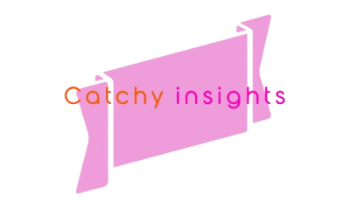Key Takeaways:
- Perfect-bound books offer a professional and polished appearance suitable for various publications.
- They provide a cost-effective solution for both small and large print runs.
- Perfect binding is versatile, accommodating different sizes and thicknesses.
- Perfect binding is a more affordable option for books with a higher page count because of the setup expenses.
- Understanding the benefits and limitations of perfect binding can help you make informed decisions for your next publishing project.
Introduction to Perfect Bound Books
The world of publishing is continually evolving, and one of the most significant advancements in print production is the rise of perfect bound books. If you consider perfect bound book printing for your next project, you’re amongst a growing group that values aesthetics and cost-efficiency. From aspiring authors self-publishing their first novels to large corporations distributing professional reports, perfect bound books provide an attractive and budget-friendly solution. This piece will explore the different factors of perfect bound books, detailing why they are a preferred choice for numerous publishers and authors and how they have the potential to enhance your upcoming printing project.
What Are Perfect Bound Books?

Perfect-bound books stand out due to their clean, square spines and neatly glued pages, offering a sleek and professional appearance that rivals traditional binding methods. This type of binding is widely used for softcover books, magazines, and catalogs. The process involves meticulously stacking the pages, applying a strong adhesive to the spine, and then attaching a cover that wraps around the entire book. This method bypasses the need for sewing or stitching, making it faster and often more cost-effective. The result is a polished book that easily competes with those found on the shelves of big retailers, making it an ideal option for various print materials that require a professional finish.
Advantages of Perfect Bound Books
- Professional Appearance: Perfect binding offers a sleek, polished look synonymous with professionally produced books. The clean edges and high-quality adhesive provide a refined appearance that can enhance the perceived value of the publication. It makes perfect-bound books appealing for self-published authors looking to compete.
- Cost-Efficiency: One of the most significant advantages of perfect binding is its cost-efficiency. Perfect binding is more cost-effective than hardcover binding, making it an excellent selection for projects on a budget without compromising quality. This affordability allows larger print runs, even for projects with modest budgets.
- Versatility: Perfect binding is highly adaptable and suitable for various book sizes and thicknesses, covering everything from slim magazines to bulky novels. This flexibility allows for creative freedom in design and production, making it suitable for various publications, including manuals, reports, and marketing materials.
Common Uses for Perfect Bound Books
Thanks to their numerous advantages, perfectly bound books are utilized in various contexts, serving different purposes effectively. Here are some of the most common applications for perfect-bound books:
- Novels and Non-Fiction Books: Perfect-bound books provide authors with a high-quality yet affordable option. A perfectly bound book’s professional look and feel can significantly impact how readers perceive the work, becoming an excellent option for self-published writers looking to rival traditionally published books.
- Magazines: Perfect binding offers a polished, durable finish that appeals to readers. Magazines often use perfect binding to achieve a more attractive and robust product that can withstand frequent handling, providing an enhanced reader experience.
- Catalogs: Perfect-bound books are ideal for presenting products attractively and professionally. The binding method ensures that catalogs are easy to flip through, with pages that lay flat for easy viewing, enhancing the overall user experience and engagement with the content.
Considerations When Choosing Perfect Bound Books
While perfect bound books offer a plethora of benefits, several factors must be considered to determine if this binding method is the best fit for your specific project needs:
- Durability: Perfect binding is generally durable but not asnding. Over time, it is more robust, but the glue may weaken, especially with frequent use, leading to loose or detached pages. However, advancements in adhesive technology have significantly improved the longevity and durability of perfect-bound books.
- Page Count: Perfect binding is typically more cost-effective for books with more pages due to the setup costs involved. Thinner books may also benefit from perfect binding, provided the spine is thick enough to hold the adhesive properly. It is vital to communicate with your printer to decide on the best thickness for your project.
Perfect Binding vs. Other Binding Methods
When selecting a binding method, comparing perfect binding to other options is crucial to ensure the best fit for your project. Here are some comparisons:
- Saddle Stitching is a cost-effective solution for shorter publications, such as pamphlets, brochures, and smaller booklets. However, it lacks the professional feel and durability of perfect binding, and saddle-stitched books are more likely to fall apart over time, especially with frequent use.
- Hardcover Binding: Hardcover binding offers superior durability and a more prestigious look but comes at a significantly higher cost. Hardcover books are often used for high-end publications, such as coffee table books, collector’s editions, and special reports where the budget allows them. While they offer enhanced durability and longevity, the increased cost may only be justifiable for some projects.
Conclusion
In conclusion, perfect bound books offer a balanced mix of quality, aesthetic appeal, and cost-efficiency. Their versatility makes them suitable for various publications, from novels and magazines to catalogs and reports. Understanding the benefits and limitations of perfect binding will enable publishers and authors to make informed decisions that best suit their project needs, ensuring the final product meets their appearance, durability, and budget expectations.

